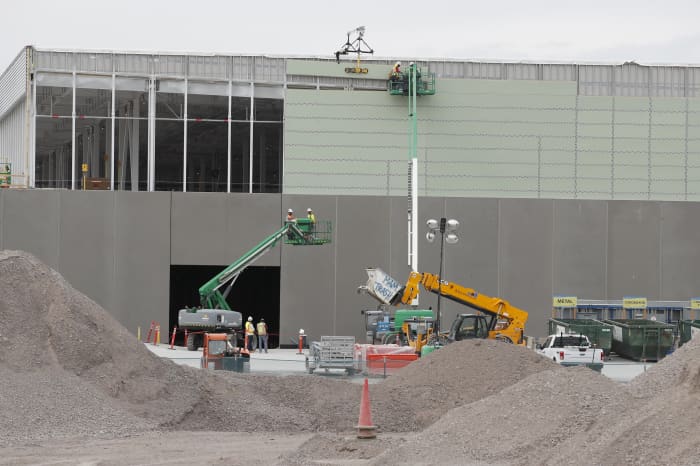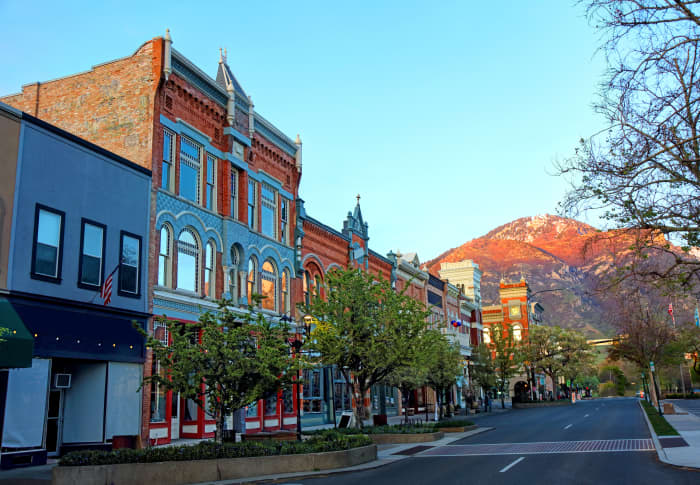
: As Fed raises rates, economists are now warning of ‘overvalued’ property markets. Some homes in Provo, Utah, drew 50 offers at the peak of housing boom. Not anymore.
Moving to Utah was a no-brainer for Leola Broussard.
Broussard, who previously rented a home from a friend in the pricey Stanford–Palo Alto area south of San Francisco, where housing costs, she told MarketWatch, are “just totally outrageous.”
Over the two years of the pandemic, many Americans, like Broussard, have flocked to Utah, seeking bigger living spaces and less congestion. It was bittersweet for Broussard because of her love of living in Northern California.
Still, the tidal wave of Californians, a growing millennial population and a shortage of home-building materials have combined to unleash an explosion in home prices in Utah, which mostly mirrors a national trend.
What Broussard, a researcher in the IT sector, doesn’t miss about the Bay Area are “the hustle and bustle and the craziness.” In Utah, she said, “there’s more of a work-life balance.”
That influx has come at a price: Recent research from Florida Atlantic University and Florida International University suggests that, based on historical pricing, properties in several cities in Utah — including Ogden and Provo — could be overvalued by as much as 50%.
“ ‘If we’re not at the peak of the current housing cycle, we’re awfully close.’ ”
The median price of a home in Salt Lake County, which comprises Salt Lake City, Riverton, Draper, West Valley, West Jordan and other municipalities, was roughly $512,850 in May 2022, up 27% over the past year, according to Zillow. That compares with a national median house price of $349,816 in May 2022, up 20.7% over the past year.
“Near-record-low mortgage rates helped fuel demand for housing, especially during the pandemic, and the competition for homes pushed prices higher. But now the Federal Reserve is raising rates to curtail inflation, and already that’s cooling demand,” Ken Johnson, a co-author of the study and an economist at Florida Atlantic University’s College of Business, told a Florida Atlantic news publication.
“If we’re not at the peak of the current housing cycle, we’re awfully close,” he added. “Recent buyers in many of these cities may have to endure stagnant or falling home values while the market settles — and that’s not what they want to hear if they had planned to resell anytime soon.”
Another challenge for the housing market: On Wednesday, the U.S. Federal Reserve raised the benchmark interest rate by 0.75 percentage point, the biggest increase since 1994 as it tries to tame rising inflation from a 40-year high.

Recent research suggests that, based on historical prices, properties in several cities in Utah — including Ogden and Provo — were overvalued by as much as 50%.
George Frey/Getty Images
Local experts, however, disagree that houses in Provo are overvalued and destined to decline. Instead, they say, prices are actually likely to appreciate further given the surge of interest in the Beehive State.
But one thing is clear: The market there is cooling. Dejan Eskic, senior research fellow at the University of Utah, told MarketWatch that instead of a house receiving 15 offers, sellers are now fielding three or four.
That’s still a significant number of offers, Eskic stressed. Properties in Utah remain on the market for a median of nine days, according to Redfin data. In Salt Lake City, homes are on the market for about a week; in Pleasant Grove, five days.
Eskic said that prior to the housing boom, homes were on the market between two weeks and 3½ weeks. So “we’ve had roughly 18 months of price appreciation,” he added, “and we’re still headed in that direction.”
The question is, for how long? Case in point: At one point during the pandemic, Andrew Ford, a Realtor in Provo, told MarketWatch that it was not unusual for a property to receive 50 offers. “It was crazy to submit the offers to our sellers,” he said.
In fact, he would put the offers on a spreadsheet “so the seller could go through it and pick the best ones.” As recent as two or three months ago, he was seeing 10 offers per home. Now, he’s seeing listings get offers in the single digits. The number of people competing for a house is decreasing, but they’re still offering over the asking price, Ford said.

Provo is the third largest city in Utah, after Salt Lake City and West Valley City.
Getty Images/iStockphoto
Nationwide, the U.S. housing market appears to be slowing down, due in part to the Federal Reserve increasing interest rates. Homebuilders ran out of windows, garage doors; they weathered a spike in lumber prices.
The economists at Florida Atlantic and Florida International had some cautionary advice for buyers in other real-estate markets they believe are overvalued. Those markets include Boise, Idaho; Austin, Texas; Ogden, Utah; and Las Vegas — all of which they identified as overvalued by more than 60%.
The authors add that just because a market is overvalued by 50% or 60% based on historical price movements does not mean it will fall by that amount, but they don’t discount a painful wakeup call for buyers and sellers in those markets.
One persistent issue propping up prices in Utah: a housing-materials shortage, combined with a strong native millennial home buying population, Eskic said.
When he asks builders in Utah which materials they’re lacking, “over the last year, probably every month, I get a different answer,” Eskic said.
And, while supply lags, the demand for homes remains so strong that it’s creating an affordability crisis, economists say.
‘Ridiculous’ pricing
Last year, competition for homes reached a fever pitch. “As prices accelerated in 2021, more than half of Utah households [were] unable to afford the median-priced home,” Eskic wrote in an October 2021 report. The median annual household income in 2020, according to the most recent data from the St. Louis Federal Reserve, was $83,670.
Leola Broussard said that her experience buying and selling homes in Utah has given her a firsthand look into the local housing market for the first time.
Last May, she bought a condominium unit in Pleasant Grove, which is a part of the Provo-Orem metro area. When she was in the process of selling it in February, she recalled that, the first day it was listed, her agent received a couple of calls and three offers. Within two days, they had almost 10 offers in total.
“The pricing is totally ridiculous,” Broussard said. In April, she moved into her second Utah home, a three-bedroom house she bought for over $450,000 in Eagle Mountain, nearer her family. (In 2021, Google parent Alphabet
GOOG,
-3.40%
GOOGL,
-3.40%
purchased 300 acres in Eagle Mountain for a new data center, the Salt Lake Tribune reported. Meta Platforms
FB
unit Facebook also has a data center in the area.)
The rise in house prices in Provo during the course of the pandemic seems strangely familiar to Broussard. “It’s almost like I left California to go to California,” she said.
The Dow Jones Industrial Average
DJIA,
-2.42%,
tech-heavy Nasdaq Composite
COMP,
-4.08%
and S&P 500
SPX,
-3.25%
closed lower on Thursday after rising on Wednesday on the back of the U.S. Federal Reserve’s rate hike.
Write to: aarthi@marketwatch.com.




